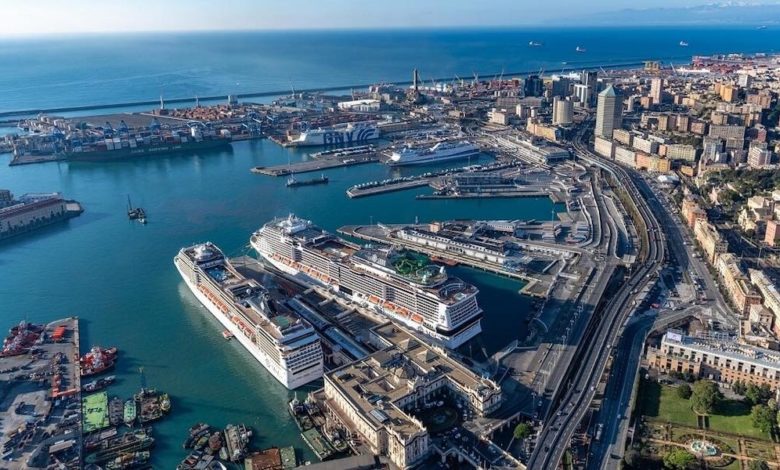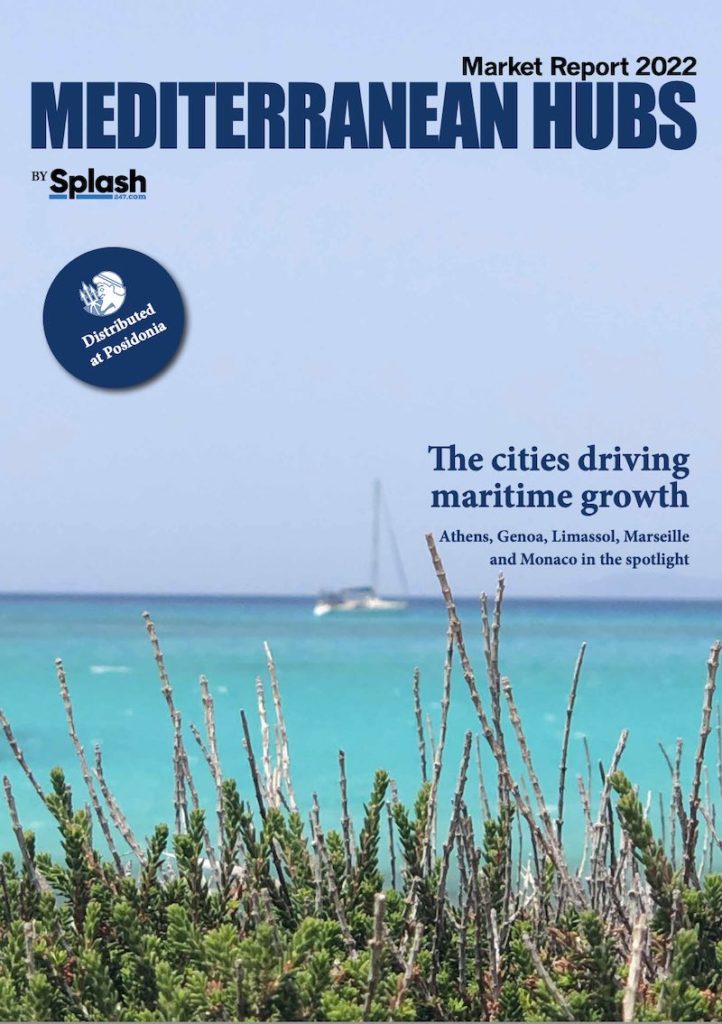Med Hubs: Genoa in the spotlight

Splash’s regional title turns its attention to Italy’s premier maritime city.
The tragic collapse of the Morandi viaduct four years ago severely impacted the economy and logistics infrastructure of both Genoa and the Liguria region. The rebuilding of the key intersection of the motorway and railway network around Genoa towards Italy’s northern regions was a united effort by local, regional authorities and operators creating the new high-tech San Giorgio bridge in record time as well as getting the same alliance to support a further extraordinary infrastructure development plan. Also known as Ports of Genoa (R)Evolution, the latter is today enforcing the network of the four ports of Western Ligurian Sea to meet the future sustainability and growth of the regional economy.
“The port and the city together have achieved a great result. With this master plan we are designing the port-city infrastructure so that there is a future prospect for the next generations thanks to the efforts of administrations, terminal operators but above all citizens who have to endure the inconvenience caused by construction sites,” says Marco Bucci, mayor of Genoa and special commissioner for the reconstruction.
Genoa handles one-third of total Italian container volumes
The Ports of Genoa system is based on four multipurpose port basins represented from east to west by Genoa and nearby Prà, then 25 km to Savona and nearby Vado Ligure, all deployed on a coastal arc of 50 km. All together these port basins offer over 7m sq m of port area, over 27 km of quays with over 100 berths and 30 port terminals managed by major global players. The Ports of Genoa set a new annual container volume record for 2021, reporting 2,781,112 teu, up 11.3% on the previous year.
The Ports of Genoa network is the main logistics entry point for the commercial exchange by the Northern Italy main regions, namely Piemonte, Lombardia, Emilia Romagna and Triveneto. Road transport is the prevailing modality but the intermodality component is growing. The rail transport ratio – 15.7% of overall transportation in 2021 – is progressively increasing, with a growth of 2,341 trains (+33,2%) and 72,603 tea (+23,6%) from 2019 to 2021.
Being the south terminal of the EU Rhine-Alpine Corridor, the penetration of the Ports of Genoa beyond the Alps is gaining traction with the ongoing works for the new high-speed Terzo Valico rail line through the Apennines that will connect the Liguria port system with Northern Italy regions and on to Northern Europe when it launches in 2024.
Another significant Genoa port infrastructure project, for which a contract was awarded last March, is the expansion of the Sestri Ponente port area, destined to accommodate the concession for a larger Fincantieri shipyard, including a new 440 m long drydock for ships up to 155,000 gt, alongside a new pier for the fitting out of large ships.
A huge new breakwater project is underway to allow the largest ships to call more easily at the Italian hub, an investment keenly welcomed by Paolo Pessina, president of Genoa’s shipping agents association.
“The Ports of Genoa (R)Evolution is key for the Ligurian shipping and logistics development. The main project represented by the new breakwater is a must to keep and increase the variety of traffic and their numbers. Without it, Genoa won’t be able to accommodate the ultra large containerships, losing traffic and frustrating the public investments in the new railway network and the Terzo Valico high-speed railway,” Pessina tells Splash.
After years of neglect, many traditional Genoese shipping companies and international lines are looking to return and to expand.
“Genoa continues to be chosen by the main liner companies for their offices to serve Italy and the Mediterranean basin. All the main groups are searching for new personnel: CMA CGM, Hapag Lloyd and MSC,” Pessina says, going to add that he is optimistic all the public investments will also attract private investments.
A huge new breakwater project is underway to allow the largest ships to call more easily at the Italian hub
Looking to the future and the growing container traffic, Spediporto, the association of local forward freighters, is pursuing an ambitious plan for Genoa port. The association developed the project for a reinforced Simplified Logistics Zone (ZLS) in the Valpolcevera valley where the Morandi collapsed and the San Giorgio bridge was built by Webuild and Fincantieri Infrastructures in record time.
“Together with the public administrations and all the stakeholders of the blue economy we completed a huge design work for the new project, which has met a lot of interest from Italian and foreign companies and investment funds,” says Giampaolo Botta, Spediporto director.
Ignazio Messina, CEO of Genoese shipping line Ignazio Messina & C, admits many involved in transport are struggling to find new space in the port, something that is especially acute in the Sampierdarena port area which suffers height restrictions due to the nearby airport and lower water drafts.
“The huge investment plan might generate a unique occasion, but the essential part of this programme must be evaluated very carefully,” Messina tells Splash. “If we are not able to coordinate timing of different facility projects, we could put our port in a situation of permanent chaos, wasting an historical occasion, especially for both road and rail land connections if we are not able to build them with European standard.”
Across the Mediterranean maritime hubs are developing, offering a full range of services and establishing themselves at shipping’s top table. Splash identified the five leading maritime capitals in the region – Athens, Genoa Limassol, Marseille and Monaco – and assigned correspondents to report on their individual strengths for a special glossy magazine. Splash readers can access the full magazine online by clicking here.

